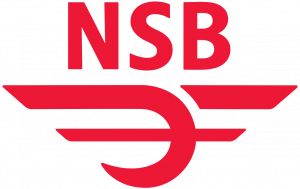
The NSB, Norwegian State Railways (“Norges Statsbaner”) were formed in 1883 with the nationalization and subsequent consolidation into one single entity of the various small private railway companies that had opened various lines thruought Norway. The acquisition of these lines was very gradual, with final two (the Bratesberg Line and the key Trunk Line) being consolidated into NSB in 1920 and 1926 respectively.
In 1921 all of NSB’s trains were hauled by steam locomotives and were formed mostly of teak-wood coaches, however starting from the following year, class EL1 electric locomotives were introduced with the electrification of the Drammen Line and the first primitive gasoline railcars made their first roundtrips on several branchlines.
After the second world war, NSB embarked on a plan to electrify or dieselize it’s fleet under the “vekk med dampen!” (“away with steam!”) slogan. This plan called for the electrification of atleast the 50% of the network and the 80% of the services operated. In 1952 the first successful diesel locomotives were purchased, the class Di2 and especially the famous NOHAB Class Di3, and at around the same time various designs of electric locomotives began services as well, such as the EL11 and EL13 classes.
The plan was a remarkable success, with steam locomotives being completely withdrawn from service in 1970. A similar modernization program also took care of the famous, but unsafe, tek-wood coaches, wich were completely retired from mainline services in 1970 and fully withdrawn in 1980.
In 1996, the NSB was restructured, with maintainance and management of the railway network being transferred to the Norwegian National Rail Administration (“Jernbaneverket”), with NSB “proper” now being in charge only of running trains. In 2002, NSB was further restructured, with freight operations being taken over by CargoNet (an NSB subsidiary).
In 2019, the NSB and Nettbus (a state-owned long-distance bus service company, the largest in Norway) merged to form a new consolidated company under the new “Vy” name.
The name choice for the new company (a norwegian word that means “outlook”, “overview” or “prospect”) has been subject to large amounts of criticism, being vehemently opposed by many norwegians, with even the Språkrådet (the Norwegian Language Council, the maximium authority over norwegian as a language) criticizing the change, given that depsite all the recent company restructurations, the three “NSB” letters are still among the most established and recognizable names in Norway.
Trivia #1:
In the 1950s, the salary of the director-general of NSB was higher even than the one of the Norwegian Prime Minister.
Trivia #2:
According to the Norwegian Language Council, only 7% of Norwegians are supportive of the “Vy” name. Retaining the original NSB name was by far the most popular option and was also the one supported by the Språkrådet.
Electric Locomotives
Whole electrified network
Flåm Line
